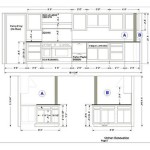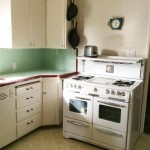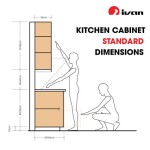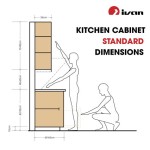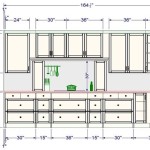How to Apply Contact Paper on Kitchen Cabinets
Contact paper, also known as self-adhesive shelf paper, is a versatile and affordable way to revamp your kitchen cabinets. It offers a quick and easy solution to update the look of your cabinets without the expense and hassle of painting or refinishing. Whether you want to add a splash of color, create a subtle pattern, or simply protect your existing cabinet surfaces, contact paper can be a great option.
Applying contact paper to kitchen cabinets is a relatively straightforward process that can be achieved in a few simple steps. With the right tools and techniques, you can achieve professional-looking results that will transform your kitchen space.
1. Prepare the Cabinets
Before applying contact paper, it's crucial to properly prepare your cabinets. This ensures a smooth and even application and helps the contact paper adhere properly. Start by cleaning the cabinet surfaces thoroughly with a mild detergent and water. Remove any grease, dirt, or grime that could interfere with adhesion. Allow the cabinets to dry completely before proceeding.
Next, sand the surfaces with fine-grit sandpaper. This creates a slightly rough texture that helps the contact paper stick better. Be careful not to sand too aggressively, as you don't want to damage the cabinet surfaces. After sanding, wipe down the cabinets again to remove any dust or debris.
For best results, it's recommended to prime the cabinets with a primer specifically designed for adhesion. This helps to create a uniform surface and prevents the contact paper from lifting or peeling. Allow the primer to dry completely before moving on to the next step.
2. Measure and Cut the Contact Paper
Accuracy is key when applying contact paper. Measure the dimensions of each cabinet door and drawer front carefully. Add an extra inch or two to each side for easier handling and trimming. Once you have your measurements, use a ruler and a sharp utility knife to cut the contact paper to size. It's best to cut the contact paper on a flat surface like a cutting mat or a piece of cardboard.
When cutting, ensure the contact paper is lying flat and smooth. Use a straight edge to guide your knife and apply even pressure. Cut through the contact paper and the backing paper simultaneously for a clean cut. It's a good idea to practice on a scrap piece of contact paper before cutting the pieces for your cabinets.
3. Apply the Contact Paper
Start by peeling back a few inches of the backing paper on the contact paper. Align the contact paper with the edge of the cabinet surface and carefully press it into place. Use a squeegee or a smooth-edged tool to smooth out any wrinkles or air bubbles. Work your way across the entire surface, ensuring even pressure and smooth application.
For larger surfaces like cabinet doors, it's helpful to remove the backing paper in sections. Peel back a few inches, apply the contact paper, then peel back another section and repeat the process. This helps prevent the contact paper from sticking to itself before you've had a chance to apply it to the cabinet. Once you've reached the end of the surface, trim any excess contact paper with a sharp utility knife. Make sure to use a straight edge for a clean and precise cut.
4. Finishing Touches
Once the contact paper is applied to all of your cabinets, it's time to add finishing touches. If you're using contact paper with a pattern or texture, ensure the patterns align seamlessly. Use a utility knife to cut out any areas where the contact paper needs to be trimmed.
To enhance the appearance of your cabinets and ensure a long-lasting application, you can seal the contact paper with a clear sealant. This creates a protective layer that resists scratches and stains and helps to prevent peeling or lifting over time. Apply the sealant according to the manufacturer's instructions.
With a little patience and care, contact paper can be a great way to refresh your kitchen cabinets and create a unique and stylish look. Remember to follow the steps carefully and use the right tools for a professional finish. Enjoy your newly transformed kitchen!
Re Wrapping Kitchen Cabinets With Contact Paper Er Friendly
How To Update Cabinets Using Contact Paper Al Kitchen Makeover Cover
How To Update Cabinets With Contact Paper The Handyman S Daughter
Diy Contact Paper Kitchen Counters The Interior Diyer
Contact Paper In The Kitchen 5 Places
How To Update Cabinets With Contact Paper The Handyman S Daughter
Transform Your Kitchen With Contact Paper For Countertops Cabana State Of Mind
Diy Countertop Cabinet With Only Contact Paper
Temporary Contact Paper Kitchen Cabinet Decorations Pink Stripey Socks
Spruce Up The Outside Of Your Kitchen Cabinets With Contact Paper Offbeat Home Life Diy Makeover
Related Posts


